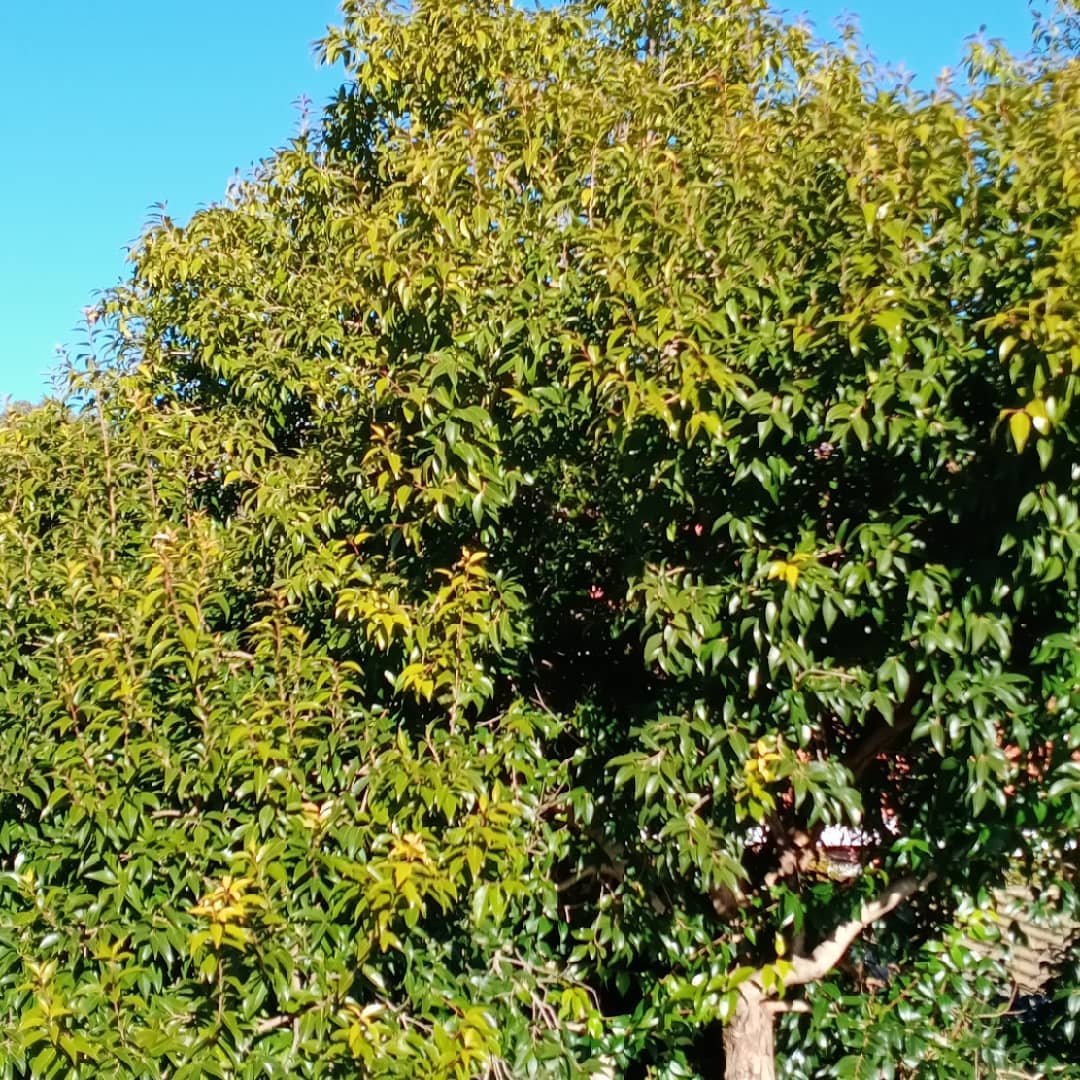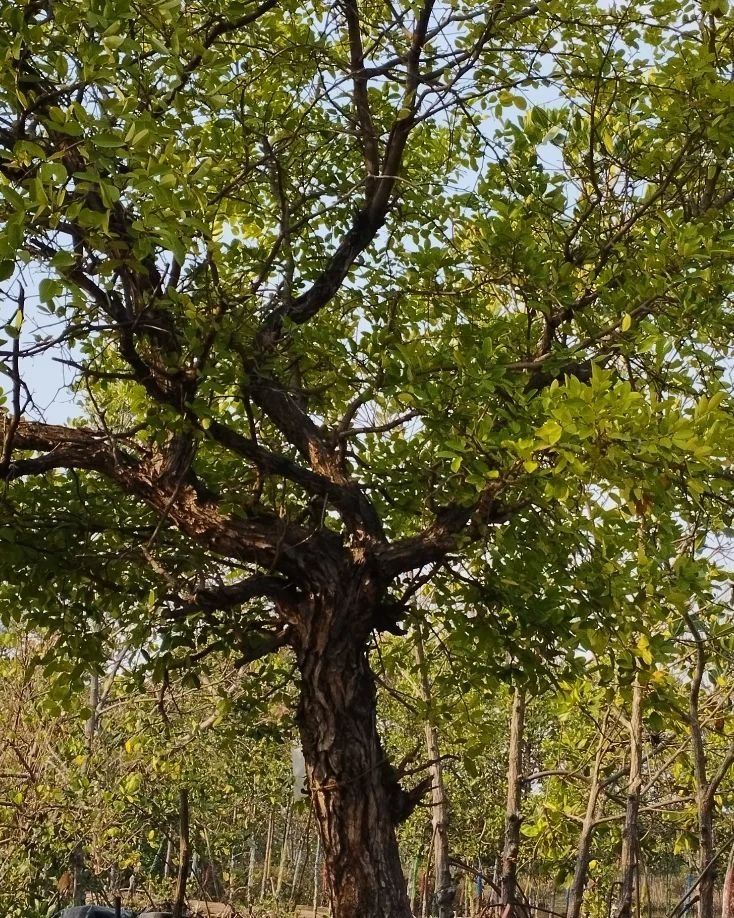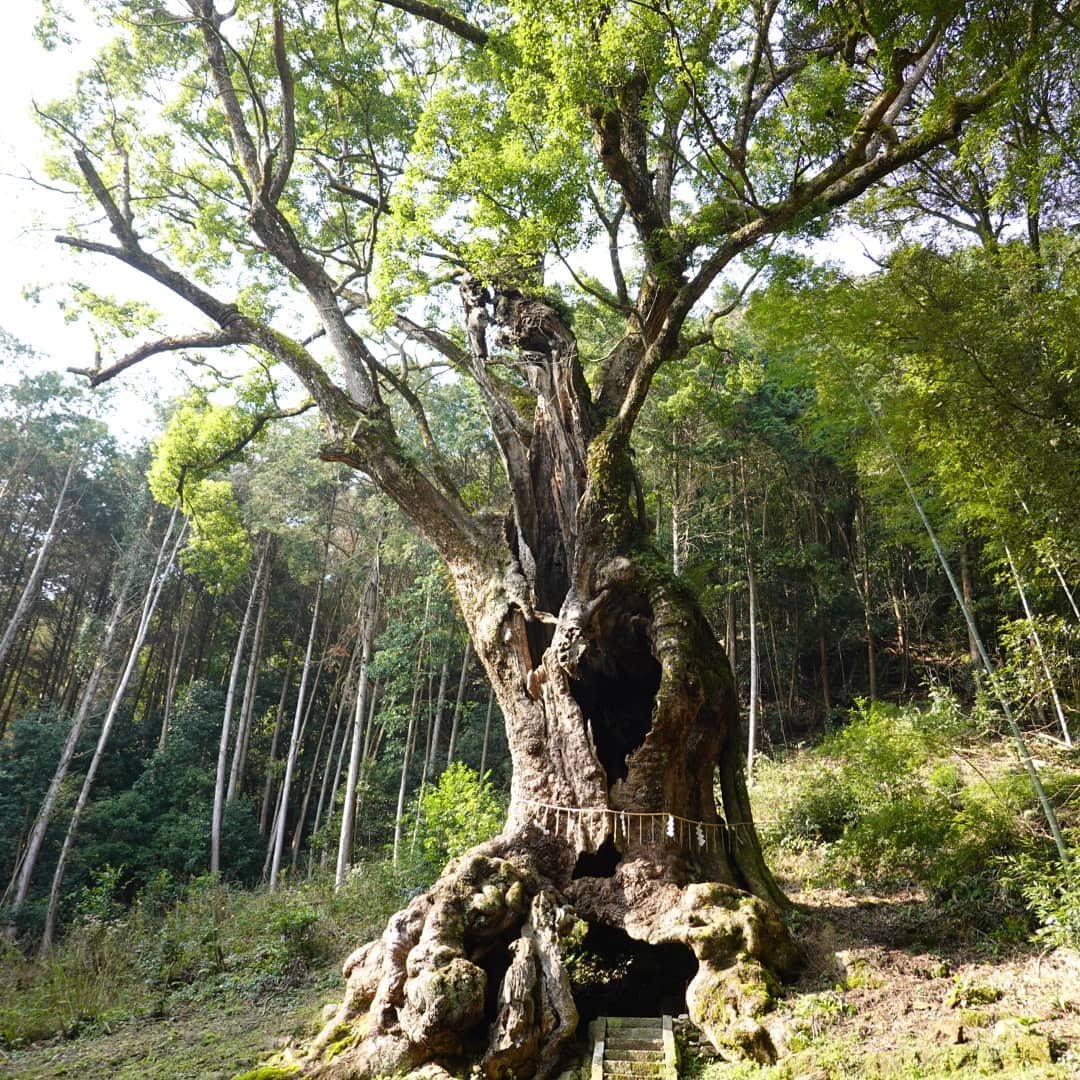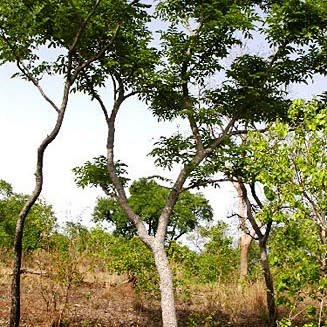Discover the fascinating world of trees that start with X. From the fragrant Xylosma to the resilient Xerophyta, learn about these unique plants and their amazing features in this easy-to-understand guide.
Trees are amazing plants that give us shade, clean air and beautiful scenery. While trees with names starting with X are not common, they have some really interesting stories. Let’s explore these unique trees and learn about their special features.
1. Xylosma

Here’s the information about the Xylosma tree in an easy-to-understand chart format:
| Aspect | Details |
|---|---|
| Botanical Name | Xylosma congestum |
| Common Name | Shiny Xylosma, Xylosma |
| Plant Zone | Zones 8-11 |
| Sun Exposure | Full sun to part shade |
| Soil Type | Well-drained soil, adaptable to various soil types |
| Watering Needs | Moderate; drought-tolerant once established |
| Growth Habit | Evergreen shrub or small tree |
| Height/Spread | 10-20 feet tall, 8-12 feet wide |
| Bloom Time | Spring to early summer |
| Flower Color | Small, inconspicuous yellowish flowers |
| Special Features | Glossy, bright green leaves; dense and bushy growth; can be pruned into hedges or screens; tolerates pruning well; attracts birds and beneficial insects |
Xylosma trees grow in warm places. The name “Xylosma” means “wood smell” in Greek because the wood often smells nice.
One type of Xylosma in the USA is the Florida Xylosma. It’s a small tree or big bush that grows up to 20 feet tall. People like it in gardens because it stays green all year and has pretty red berries.
Florida Xylosma is tough and can grow in different soils. It doesn’t need much water once it’s grown up. Birds love to eat its berries, which helps spread the tree’s seeds.
2. Xanthoceras

Here’s the information about the Xanthoceras tree in an easy-to-understand chart format:
| Aspect | Details |
|---|---|
| Botanical Name | Xanthoceras sorbifolium |
| Common Name | Yellowhorn, Shiny Leaf Yellowhorn |
| Plant Zone | Zones 4-8 |
| Sun Exposure | Full sun |
| Soil Type | Well-drained soil, tolerates various soil types, including sandy and loamy soils |
| Watering Needs | Moderate; drought-tolerant once established |
| Growth Habit | Deciduous tree |
| Height/Spread | 15-20 feet tall, 15-20 feet wide |
| Bloom Time | Late spring |
| Flower Color | White with yellow centers, turning red at the base as they age |
| Special Features | Attractive, fragrant flowers; pinnate leaves similar to those of mountain ash; produces edible seeds; ornamental and adaptable to different landscapes; attracts pollinators |
Xanthoceras sorbifolium, also called Yellowhorn, comes from China but can grow in many parts of the USA.
Yellowhorn is a small tree, about 25 feet tall. It has yellow flowers in spring that look like little horns. People can use all parts of this tree – the flowers are pretty, the leaves make tea, and you can eat the cooked seeds.
Yellowhorn is tough and can handle cold weather. It grows well in sunny or partly shady spots.
3. Xylocarpus

Here’s the information about the Xylocarpus tree in an easy-to-understand chart format:
| Aspect | Details |
|---|---|
| Botanical Name | Xylocarpus granatum |
| Common Name | Mangrove Apple, Cannonball Mangrove |
| Plant Zone | Zones 10-11 |
| Sun Exposure | Full sun to part shade |
| Soil Type | Well-drained, prefers brackish or saline conditions, typically found in mangrove ecosystems |
| Watering Needs | High; typically found in coastal and estuarine areas |
| Growth Habit | Evergreen tree |
| Height/Spread | 20-40 feet tall, spreads similarly wide |
| Bloom Time | Year-round in tropical climates |
| Flower Color | Small, white to pale pink flowers |
| Special Features | Notable for its large, round, woody fruit resembling cannonballs; supports coastal ecosystems; provides habitat for wildlife; used in traditional medicine and local crafts |
Xylocarpus trees grow near the ocean. The name means “wood fruit” in Greek because it has big, woody fruits that look like cannonballs.
The Cannonball Mangrove is a type of Xylocarpus. It grows in salty water in warm parts of the world. While it doesn’t naturally grow in the USA, scientists are studying it to see if it could help protect coasts from storms.
Cannonball Mangrove spreads its seeds in a cool way. Its big fruits fall into the water and float to new places. Then, the fruit breaks open and new trees start to grow.
4. Xylia

Here’s the information about the Xylia tree in an easy-to-understand chart format:
| Aspect | Details |
|---|---|
| Botanical Name | Xylia xylocarpa |
| Common Name | Ironwood, Pyinkado |
| Plant Zone | Zones 10-12 |
| Sun Exposure | Full sun to part shade |
| Soil Type | Well-drained soil, tolerant of various soil types, including poor soils |
| Watering Needs | Moderate; drought-tolerant once established |
| Growth Habit | Deciduous tree |
| Height/Spread | 65-100 feet tall, spreads 40-50 feet wide |
| Bloom Time | Late spring to early summer |
| Flower Color | Creamy white to yellowish flowers |
| Special Features | Dense, hard, and durable wood; used in construction, furniture, and flooring; nitrogen-fixing tree; provides shade and habitat for wildlife |
Xylia trees grow in Asia and Africa. The name means “woody” in Greek. Xylia xylocarpa sometimes grows in warm parts of the USA.
Xylia xylocarpa can grow up to 100 feet tall. It has dark brown bark and leaves that fold up at night. The tree makes flat seed pods that twist into spirals when dry.
People like this tree because its wood is very strong. They use it to make furniture, boats, and buildings. It’s so hard that some people call it “ironwood.”
5. Xylopia

Here’s the information about the Xylopia tree in an easy-to-understand chart format:
| Aspect | Details |
|---|---|
| Botanical Name | Xylopia aethiopica |
| Common Name | African Pepper, Ethiopian Pepper, Guinea Pepper |
| Plant Zone | Zones 10-12 |
| Sun Exposure | Full sun to part shade |
| Soil Type | Well-drained, fertile soil |
| Watering Needs | Moderate |
| Growth Habit | Evergreen tree |
| Height/Spread | 30-60 feet tall, spreads 20-30 feet wide |
| Bloom Time | Year-round in tropical climates |
| Flower Color | Yellow-green flowers |
| Special Features | Produces aromatic fruits (pods) used as a spice; medicinal properties; dense foliage provides good shade; attractive, fragrant flowers |
Xylopia trees and bushes grow in warm places around the world. The name means “bitter wood” in Greek.
One interesting Xylopia is the Ethiopian Pepper, or Xylopia aethiopica. While it doesn’t grow naturally in the USA, some people use its dried fruit as a spice in cooking.
The Ethiopian Pepper tree can grow up to 65 feet tall. Its fruits taste like a mix of pepper and nutmeg. In Africa, people use different parts of this tree for medicine.
6. Ximenia

Here’s the information about the Ximenia tree in an easy-to-understand chart format:
| Aspect | Details |
|---|---|
| Botanical Name | Ximenia americana |
| Common Name | Sour Plum, Wild Plum, Tallow Wood |
| Plant Zone | Zones 9-11 |
| Sun Exposure | Full sun |
| Soil Type | Well-drained, adaptable to sandy and rocky soils |
| Watering Needs | Low; drought-tolerant once established |
| Growth Habit | Deciduous shrub or small tree |
| Height/Spread | 6-20 feet tall, spreads 6-10 feet wide |
| Bloom Time | Spring to summer |
| Flower Color | White to pale yellow flowers |
| Special Features | Edible fruit with a tart flavor; used in traditional medicine; nitrogen-fixing plant; attracts wildlife; tolerates drought and poor soil conditions |
Ximenia is a group of small trees or bushes. One type that grows in the USA is Ximenia americana, also called hog plum or tallow wood.
Ximenia americana grows in Florida and other warm parts of the country. It has small, yellow-green flowers and orange fruits that look like little plums. Birds and other animals eat the fruits and spread the seeds.
The wood of this tree is very oily. People sometimes use it to make things that need to be waterproof.
7. Xingyun

Here’s the information chart for Phoebe zhennan:
| Aspect | Details |
|---|---|
| Botanical Name | Phoebe zhennan |
| Common Name | Zhennan Laurel |
| Plant Zone | Hardiness zones 9-11 |
| Sun Exposure | Full sun to partial shade |
| Soil Type | Well-draining, fertile soil |
| Watering | Regular watering; prefers moist soil |
| Growth Habit | Evergreen tree |
| Height/Spread | Height: Up to 30-40 feet; Spread: 20-30 feet |
| Special Features | Glossy, dark green foliage, aromatic leaves, suitable for landscaping and shade tree |
Xingyun trees, also known as Phoebe zhennan, are rare trees from China. While they don’t naturally grow in the USA, some botanical gardens are trying to grow them.
Xingyun trees can grow very tall, up to 130 feet. They have smooth, grey bark and shiny green leaves. The wood is valuable and people use it to make fancy furniture.
These trees are endangered in the wild because people have cut down so many of them. Some groups are working to protect the trees that are left.
8. Xanthostemon

Here’s the information chart for the Xanthostemon tree:
| Aspect | Details |
|---|---|
| Botanical Name | Xanthostemon chrysanthus |
| Common Name | Golden Penda, Junjum |
| Plant Zone | USDA Zones 10-11 |
| Sun Exposure | Full sun |
| Soil Type | Well-draining, fertile soil |
| Watering | Regular watering, especially during dry periods |
| Growth Habit | Small to medium-sized evergreen tree |
| Height/Spread | Height: 20-40 feet; Spread: 15-25 feet |
| Special Features | Large, bright yellow flower clusters, attracts birds and butterflies, excellent for landscaping |
Xanthostemon trees grow naturally in Australia and nearby islands. One type, Xanthostemon chrysanthus, is sometimes planted in very warm parts of the USA like Hawaii.
People call Xanthostemon chrysanthus the golden penda because it has bright yellow flowers. The tree can grow up to 40 feet tall. It stays green all year and can handle salty air, so it’s good for planting near beaches.
9. Xymalos

Here’s the information chart for the Xymalos tree:
| Aspect | Details |
|---|---|
| Botanical Name | Xymalos monospora |
| Common Name | Xymalos |
| Plant Zone | Hardiness zones 10-11 |
| Sun Exposure | Full sun to partial shade |
| Soil Type | Well-draining, sandy soil |
| Watering | Moderate; drought tolerant once established |
| Growth Habit | Small to medium-sized tree |
| Height/Spread | Height: Up to 30-40 feet; Spread: 20-30 feet |
| Special Features | Yellowish-green flowers, edible fruits, used for timber and shade in tropical regions |
Xymalos is a type of tree that grows in Africa. While it doesn’t naturally grow in the USA, it’s an interesting tree to learn about. The most well-known species is Xymalos monospora, also called lemonwood.
Xymalos monospora can grow up to 65 feet tall. It has leaves that smell like lemons when you crush them. In Africa, people use parts of this tree for medicine and to make spoons and other tools.
10. Xeroderris

Here’s the information chart for the Xymalos tree:
| Aspect | Details |
|---|---|
| Botanical Name | Xymalos monospora |
| Common Name | Xymalos |
| Plant Zone | Hardiness zones 10-11 |
| Sun Exposure | Full sun to partial shade |
| Soil Type | Well-draining, sandy soil |
| Watering | Moderate; drought tolerant once established |
| Growth Habit | Small to medium-sized tree |
| Height/Spread | Height: Up to 30-40 feet; Spread: 20-30 feet |
| Special Features | Yellowish-green flowers, edible fruits, used for timber and shade in tropical regions |
Xeroderris is a group of trees that grow in Africa. The most well-known type is Xeroderris stuhlmannii. While it doesn’t grow naturally in the USA, it’s an interesting tree to learn about.
Xeroderris stuhlmannii can grow up to 65 feet tall. It loses its leaves during the dry season to save water. People in Africa use its wood to make tools and furniture. They also use parts of the tree for traditional medicine.
Even though trees that start with X are not common, they have some amazing features. From the sweet-smelling Xylosma to the tough Yellowhorn, these trees show us how diverse and interesting nature can be.
Learning about these unusual trees helps us understand the importance of all plants in our world. Every tree, no matter how rare, plays a role in its environment. They provide homes for animals, help clean our air, and sometimes give us useful products.
Next time you’re outside, take a moment to look at the trees around you. Even if they don’t have names starting with X, each one has its own special qualities. By appreciating and caring for trees, we can help keep our planet healthy and beautiful for years to come.
Remember, while some of these trees don’t grow naturally in the USA, learning about them helps us understand the amazing diversity of plants around the world. It also reminds us how important it is to protect rare and endangered species, no matter where they grow.